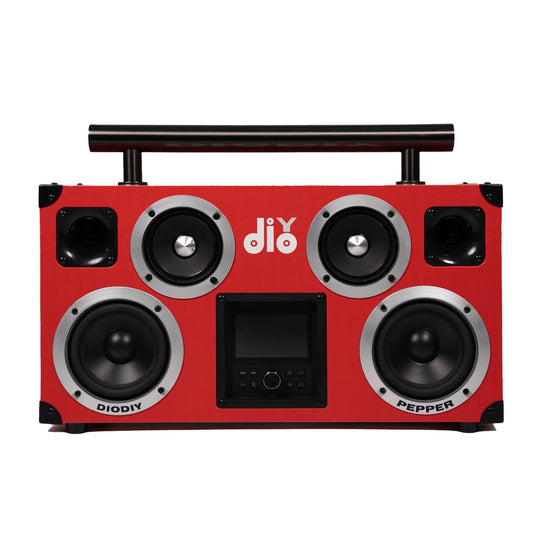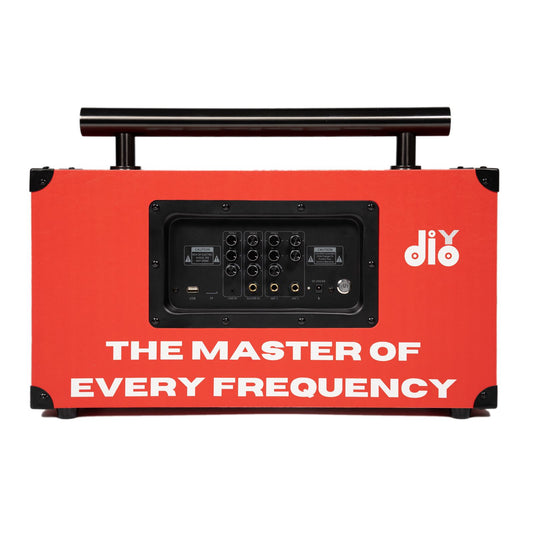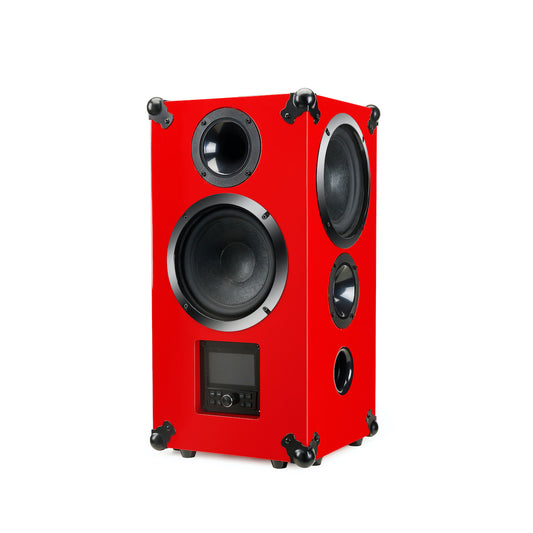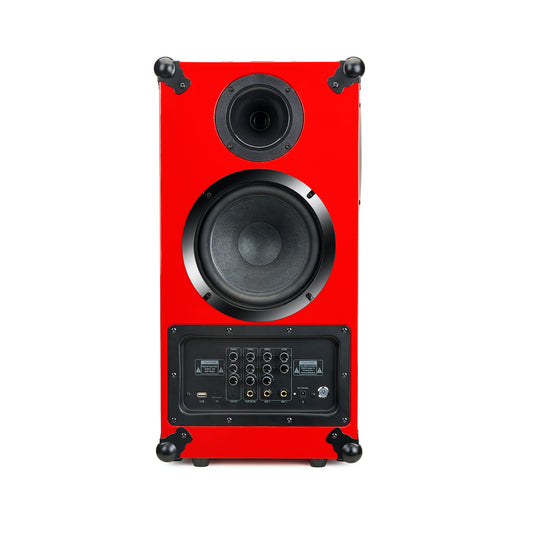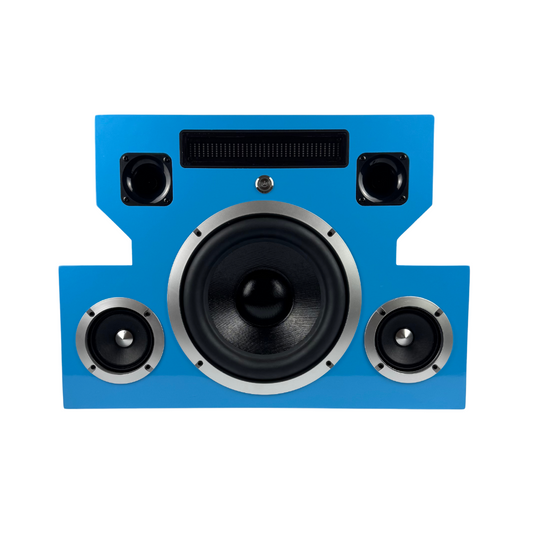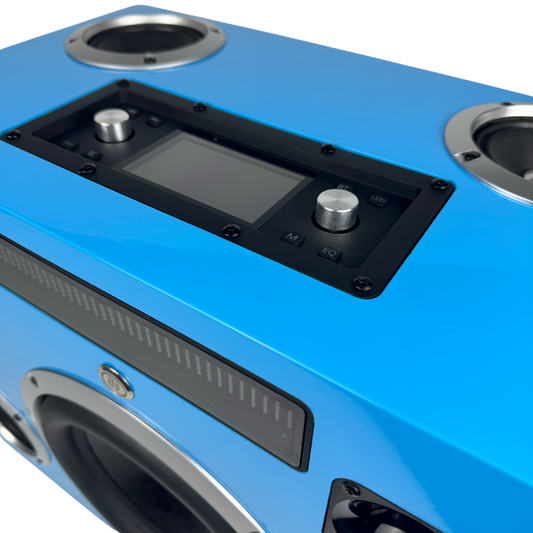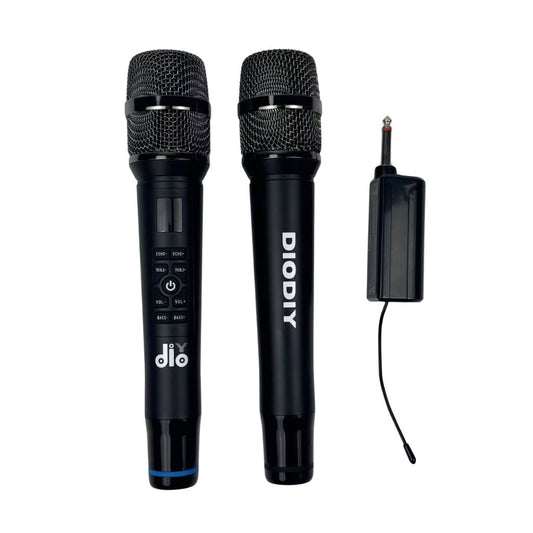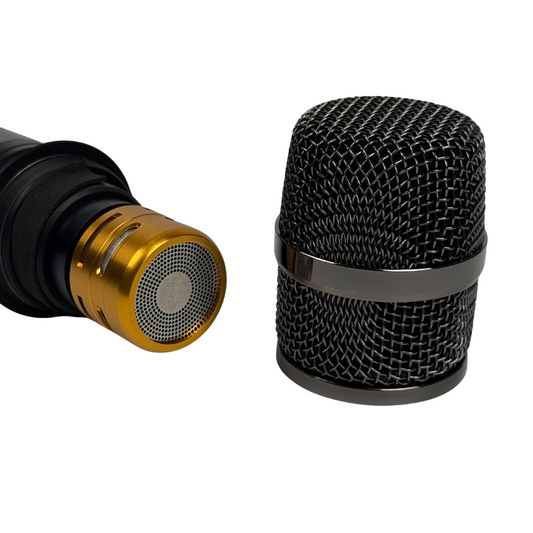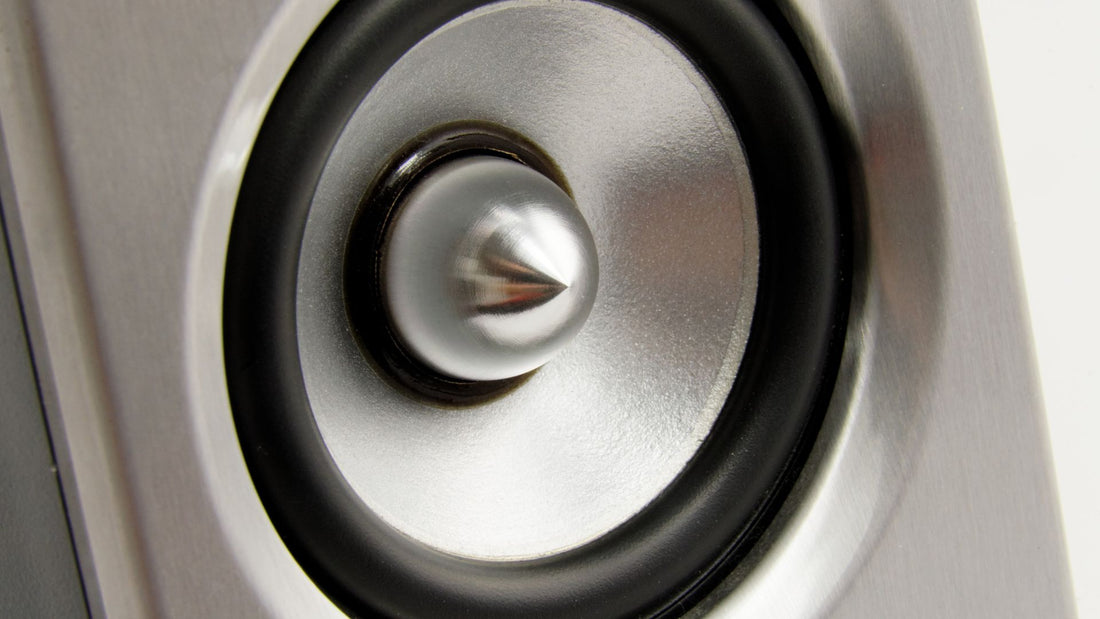
How Do Cone Shapes in Loudspeakers Affect Sound?
Share
When designing a custom speaker, the cone shape plays a crucial role in determining how sound is projected and perceived by the listener. While it may seem like a small detail, the design and geometry of the cone can have a significant impact on the quality, clarity, and direction of the sound produced by the loudspeaker. Whether you're building a home theater system, professional audio setup, or a DIY custom speaker, understanding the differences between various cone shapes will help you make more informed decisions about your speaker design.
In this blog, we will explore the differences between common cone shapes used in loudspeaker design, explain how they affect sound reproduction, and discuss which types of cones are best suited for different audio applications. We’ll also touch on key considerations for custom speaker builders who want to optimize their design for specific sound characteristics.
What is a Loudspeaker Cone?
The loudspeaker cone, also known as the diaphragm, is the part of the speaker driver that vibrates in response to electrical signals, moving air to create sound waves. The shape of the cone influences how these sound waves propagate, affecting factors such as frequency response, dispersion, and overall sound quality. The cone is usually made from materials like paper, plastic, metal, or composites, and is attached to the voice coil, which drives the movement of the cone based on the electrical input.
While material choices affect the performance and sound characteristics of the speaker, the shape of the cone has a particularly significant effect on how the sound is dispersed and how efficiently the speaker reproduces different frequencies.
Common Cone Shapes in Loudspeaker Design
Let’s take a look at some of the most common cone shapes used in loudspeaker design and how each one impacts sound reproduction.
1. Traditional Cone Shape (Conical)
The traditional cone shape, also known as the conical shape, is the most widely used design in loudspeakers. This shape is what most people envision when they think of a speaker driver.
- Design: Conical speakers have a wide, shallow cone with a narrow apex where the voice coil attaches. The cone widens as it moves toward the outer edge, creating a simple triangular cross-section.
- Sound Characteristics: The traditional conical shape offers a balanced sound reproduction across a broad frequency range, making it suitable for both low and midrange frequencies. It’s known for its relatively wide dispersion pattern, meaning the sound is spread evenly across a broad area, making it ideal for general-purpose audio applications.
- Pros:
- Good balance between low, mid, and high frequencies.
- Wide sound dispersion for even sound distribution.
- Commonly used, cost-effective design.
- Cons:
- Can introduce distortion at higher volumes or frequencies due to break-up modes (areas of the cone moving out of phase).
- Limited control over sound directivity compared to other cone shapes.
Applications: The conical shape is commonly used in full-range speakers and woofers, as it can handle a broad frequency range with decent efficiency.
2. Exponential Cone
The exponential cone shape is designed to improve the efficiency of sound wave propagation by gradually increasing the diameter of the cone. This shape is more tapered than the traditional conical design, allowing for smoother transitions of sound waves.
- Design: The exponential cone starts with a smaller apex at the center and gradually widens in a smoother, more gradual curve toward the edges.
- Sound Characteristics: This shape offers improved sound projection and greater efficiency, particularly in the midrange frequencies. The gradual flare of the cone helps reduce distortion at higher frequencies, creating a cleaner sound compared to traditional cones. Exponential cones are known for their ability to produce accurate sound reproduction with reduced phase distortion.
- Pros:
- Improved efficiency for midrange frequencies.
- Reduced phase distortion for clearer sound.
- Better sound projection and focus.
- Cons:
- Not as effective for very low frequencies (bass).
- More complex and expensive to manufacture.
Applications: Exponential cones are often found in custom speaker designs that require high clarity and accuracy in the midrange, such as midrange drivers or horn-loaded speakers.
3. Parabolic Cone
Parabolic cone shapes are designed to provide focused sound projection, making them ideal for applications where sound needs to be directed toward a specific listening area. This shape is commonly used in more specialized speaker systems.
- Design: Parabolic cones have a curved surface that directs sound waves outward in a more controlled, focused manner. The shape resembles a parabola, with the deepest point at the center and a gradual rise toward the edges.
- Sound Characteristics: The parabolic shape is known for its excellent directivity and focused sound projection. This results in more concentrated sound energy being delivered to the listener, which can enhance the listening experience, especially in spaces where sound needs to be focused in a specific direction. Parabolic cones tend to perform well with high-frequency sounds, delivering more accurate and clear treble.
- Pros:
- Focused sound projection for more accurate directionality.
- Ideal for high-frequency sound reproduction.
- Reduced distortion and improved clarity at high frequencies.
- Cons:
- Limited dispersion, meaning the sound is less evenly spread across a room.
- Not ideal for low frequencies, limiting their use in full-range speakers.
Applications: Parabolic cones are often used in tweeters and high-frequency drivers where accurate and focused sound projection is critical.
4. Elliptical Cone
Elliptical cones offer a unique design that creates an elongated cone shape, designed to address specific audio performance requirements, such as better handling of sound dispersion and control of off-axis frequencies.
- Design: The elliptical cone has a longer axis in one direction and a shorter axis in the perpendicular direction, giving it an elongated shape. This shape helps in controlling the dispersion pattern of sound waves.
- Sound Characteristics: The elliptical cone provides better control over sound dispersion, ensuring that sound is spread more evenly both on-axis and off-axis. This results in a more consistent listening experience, regardless of where the listener is positioned relative to the speaker. The elongated shape also helps reduce phase distortion and improves midrange and high-frequency reproduction.
- Pros:
- Even sound dispersion across different listening positions.
- Reduced phase distortion and clearer sound.
- Ideal for midrange and high frequencies.
- Cons:
- More difficult to manufacture and design.
- Less effective for low-frequency reproduction.
Applications: Elliptical cones are commonly used in custom speaker systems where even sound dispersion and wide listening areas are important, such as in home theaters or sound reinforcement systems.
5. Flat Diaphragm (Planar Cone)
The flat diaphragm, or planar cone, is a non-traditional design that uses a flat surface rather than a cone-shaped diaphragm. This design is most commonly found in high-end or specialized speakers.
- Design: Instead of a cone, this type of speaker uses a flat diaphragm attached to a voice coil. The diaphragm vibrates as a whole, producing sound without the shape variations seen in conical or curved diaphragms.
- Sound Characteristics: Flat diaphragms are known for their ability to produce highly accurate sound with minimal distortion. They offer excellent control over high frequencies and are particularly effective at producing detailed, nuanced audio. However, they can lack the efficiency needed for low-frequency sound reproduction, which is why they are often paired with other types of drivers, such as woofers.
- Pros:
- Extremely accurate sound reproduction.
- Minimal distortion across the frequency range.
- Ideal for high-frequency and midrange audio.
- Cons:
- Inefficient for low frequencies, requiring additional drivers for bass.
- More expensive and difficult to manufacture.
Applications: Flat diaphragms are typically found in high-end speaker designs, such as planar magnetic or electrostatic speakers, where sound accuracy and detail are prioritized over raw power.
How Cone Shape Affects Sound
Now that we’ve explored the most common cone shapes, let’s break down how these shapes affect the sound quality and performance of a custom speaker.
1. Sound Dispersion
Cone shape significantly affects how sound is dispersed across a listening area. For example, traditional conical cones have wide dispersion, meaning they spread sound evenly across a room. This is great for general-purpose speakers that need to fill a large space with sound. However, parabolic cones focus sound more narrowly, which can be beneficial when you want more direct sound to a specific location.
When designing a custom speaker, it's essential to consider where the speaker will be placed and how you want the sound to be projected. If you're building a home theater system where listeners will be seated directly in front of the speakers, a more focused cone shape may be appropriate. On the other hand, if you need to fill a room with even sound, a wide-dispersion cone is the better choice.
2. Frequency Response
Different cone shapes perform better at different frequencies. For example, conical and exponential cones work well across a broad range of frequencies, making them ideal for full-range speakers. Parabolic and elliptical cones, on the other hand, excel at higher frequencies, making them better suited for tweeters and midrange drivers.
If you're designing a custom speaker system, it’s important to match the cone shape to the driver’s frequency range. A woofer with a conical or exponential cone will deliver deeper bass, while a tweeter with a parabolic cone will provide crisp, clear treble.
3. Distortion and Clarity
Cone shape also plays a role in how much distortion is introduced at higher volumes. Flat diaphragms and elliptical cones are known for minimizing distortion due to their ability to maintain more even movement across the diaphragm, especially at higher frequencies. This leads to improved clarity, making these shapes ideal for audiophiles and high-end custom speaker systems where accuracy and precision are prioritized.
In contrast, traditional conical cones, while versatile and cost-effective, may introduce more distortion at high volumes due to break-up modes. These occur when different parts of the cone move out of phase with one another, which can cause muddiness in the sound, particularly in the midrange and higher frequencies.
4. Efficiency and Power Handling
The shape of the cone can also influence how efficiently a speaker converts electrical signals into sound. Efficient designs like exponential and parabolic cones can project sound more effectively with less power, making them ideal for applications where efficiency is crucial, such as portable speakers or systems running on limited power.
However, the trade-off is that these shapes may not handle very low frequencies as well as conical or flat diaphragm designs. For bass-heavy custom speakers, the cone shape must balance efficiency with the ability to move enough air to produce low-frequency sound waves. This is why many high-performance woofers use a deeper conical shape combined with rigid materials to ensure both power handling and low-end response.
How to Choose the Best Cone Shape for Your Custom Speaker
Selecting the right cone shape for your custom speaker project depends on several factors, including the type of sound you want to produce, the environment where the speaker will be used, and your specific design goals. Below are some key considerations to help you make the best choice.
1. Frequency Range
Start by considering the frequency range your speaker driver needs to cover. If you’re building a full-range speaker or a woofer, a traditional conical shape may offer the best balance across low, mid, and high frequencies. For midrange and high-frequency drivers, an elliptical or parabolic cone may provide greater clarity and directivity, allowing you to target specific frequency ranges with more precision.
2. Sound Dispersion Needs
If you're designing a custom speaker for a large room or an outdoor environment where you need to spread sound evenly, a wide-dispersion shape like the traditional conical cone may be ideal. Conversely, for focused sound projection in home theaters, small rooms, or specific listening zones, a parabolic or elliptical shape will better direct sound where you need it.
3. Application and Use Case
Consider how and where the speaker will be used. For portable or power-efficient designs, an exponential cone shape can help maximize sound output while minimizing the power required. If your focus is on accuracy and detail for high-end audio or studio monitors, a flat diaphragm may be the best option for delivering crystal-clear sound with minimal distortion.
4. Aesthetic and Design Preferences
In addition to sound performance, the appearance of the speaker cone can impact your overall design. If you're building a custom speaker for a high-end client or personal use, the aesthetics of the cone shape may play a role. While most of the impact comes from the material and surface treatment, the shape itself can influence the final look of your speaker.
5. Material and Construction Complexity
Some cone shapes, like flat diaphragms or elliptical designs, require more advanced manufacturing techniques and materials, which can drive up costs. Consider whether the added benefits of a more complex shape are worth the increased difficulty in construction or material costs. For many custom speaker builders, conical or exponential cones offer a good balance of performance and ease of construction.
Conclusion: The Right Cone Shape for Your Custom Speaker Design
The shape of the speaker cone is a critical aspect of speaker design, as it directly affects sound dispersion, frequency response, efficiency, and overall audio quality. Whether you choose a traditional conical shape for versatility, a parabolic cone for focused sound projection, or a flat diaphragm for precision and accuracy, the right cone shape depends on your specific needs and design goals.
For custom speaker builders, understanding how each cone shape influences sound production is key to creating a system that meets your performance and aesthetic requirements. By carefully selecting the cone shape that matches your desired sound profile, you can ensure that your custom speakers not only sound great but also perform at their best in any environment.
At DioDIY, we’re here to help with all aspects of your custom speaker design, from selecting the right components to providing expert guidance on the best cone shapes for your project. While we don't sell enclosures or cones directly, feel free to contact us if you have any questions or need assistance with your custom speaker build. Let us help you bring your audio vision to life with the best components and design choices tailored to your needs.

